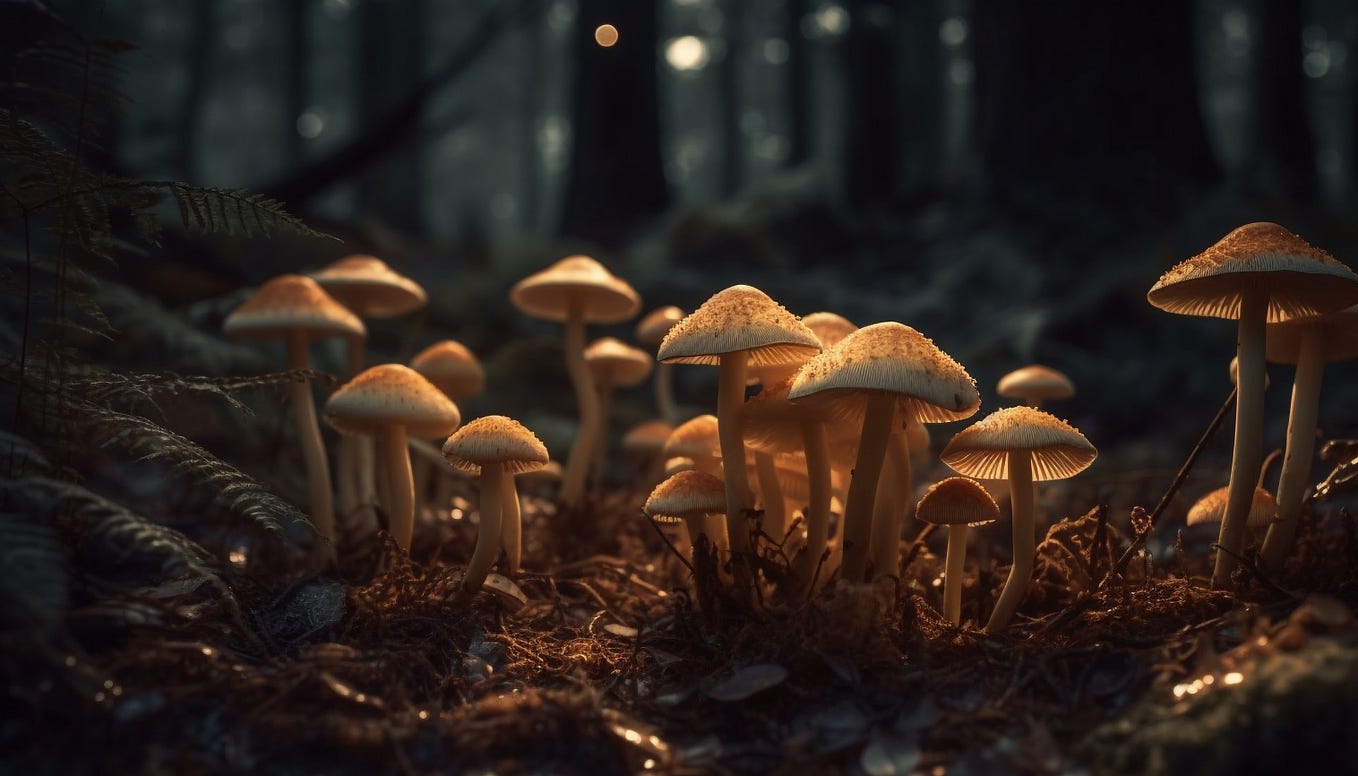Fascinating Lifecycle of Mushrooms
The lifecycle of mushrooms, like many fungi, is fascinating and includes several distinct stages:
1. Spore Dispersal: The lifecycle begins with the dispersal of microscopic spores produced by mature mushrooms. These spores are released from the gills, pores, or other structures on the underside of the mushroom cap. They are dispersed by air currents, water, or animals to new locations where they can germinate and grow.
2. Germination: When conditions are favorable, spores germinate to form tiny, thread-like structures called hyphae. These hyphae extend and branch out, gradually forming a network known as mycelium. Mycelium is the vegetative part of the fungus and serves as the primary mode of nutrient absorption and growth.
3. Mycelium Growth: As the mycelium grows, it continues to expand through the substrate, which can be soil, decaying organic matter, or the roots of plants in the case of mycorrhizal fungi. Mycelial networks can be extensive, with individual hyphae intertwining and forming a complex web beneath the surface.
4. Fruiting Body Formation: When environmental conditions are optimal, such as the right temperature, humidity, and nutrient availability, the mycelium develops specialized structures called fruiting bodies. These structures include the familiar mushroom caps, which house the reproductive organs of the fungus.
5. Mushroom Development: The fruiting body undergoes rapid growth, with the cap expanding and the stalk elongating. During this stage, the mushroom undergoes a process called differentiation, where various cell types develop into specific structures, including the cap, gills, stem, and veil.
6. Spore Production: Once the fruiting body reaches maturity, it begins producing and releasing spores from the underside of the cap. This typically occurs through structures like gills or pores. Spores are dispersed into the surrounding environment, continuing the lifecycle by germinating and forming new mycelium elsewhere.
7. Decay and Recycling: After spore release, the mushroom begins to senesce and decompose. Fungi play a vital role in breaking down organic matter, releasing nutrients back into the environment for reuse by other organisms. This decomposition process is essential for nutrient cycling and soil health.
This lifecycle of mushrooms demonstrates the intricate and interconnected processes involved in fungal growth, reproduction, and ecological functioning. Mushrooms play essential roles in ecosystems, contributing to nutrient cycling, soil formation, and the health of plants and other organisms.

Comments
Post a Comment